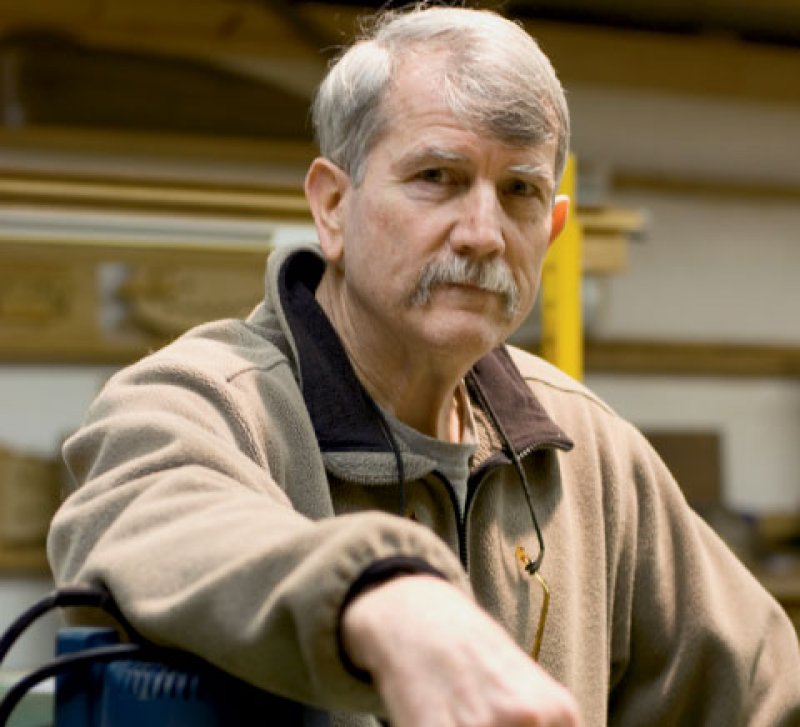Behind the Veneer
Behind the Veneer: Craftsman Barry Tribble enhances his creations one thin piece at a time
Standing in his 3,500-square-foot woodworking shop, Barry Tribble slides a thick cardboard box onto a low table. He tugs on a corner, and peels it open, revealing 30 sheets of wood veneer as thin as poster paper and as delicate as glass.
This is makore, also known as African cherry. Even unfinished, its chocolate-brown surface with swirling grain patterns is captivating.
Tribble has stacked this and dozens of other veneers in his rural McDowell County studio, which sits next to the home where the Florida native and his wife, Carol, have lived since the mid-’90s. Soon, he will use the makore on one of his handmade furniture pieces. But it’s not until the final coat of varnish is applied that the intrinsic beauty of the surface is fully revealed. “Just wait,” Tribble says, sliding the sheets onto a shelf. “As soon as the finish goes on, the whole thing will come alive.”
Like a master painter knows color theory, Tribble knows the intricacies of working with veneers. “Every one of these pieces is different,” he says. “The challenge is how you use it.” Guided by his computer-generated drawings, he cuts and arranges hundreds of pieces into patterns. Some are geometric abstracts with bold, black lines contrasted by blocks dyed brilliant red, green, and purple. Others are influenced by traditional Celtic and Appalachian designs: An inlaid endless knot curves around the edge of one small table; a cascading star in brown, red, and gold veneers bursts across the top of another.
When he completes the design, he adheres it to a piece of his hand-built furniture, which could be a small side table, a dining room set, or an architectural door. Depending on its size and complexity, a piece can take months to finish, even for Tribble, who has spent the last 20 years teaching himself the craft and perfecting his technique.
And he still loves it when he finishes a piece, revealing the wood’s final color and character. “You never know what this stuff is going to look like when you’re building it,” he says. “And that’s part of the fun.”
—Angie Newsome
